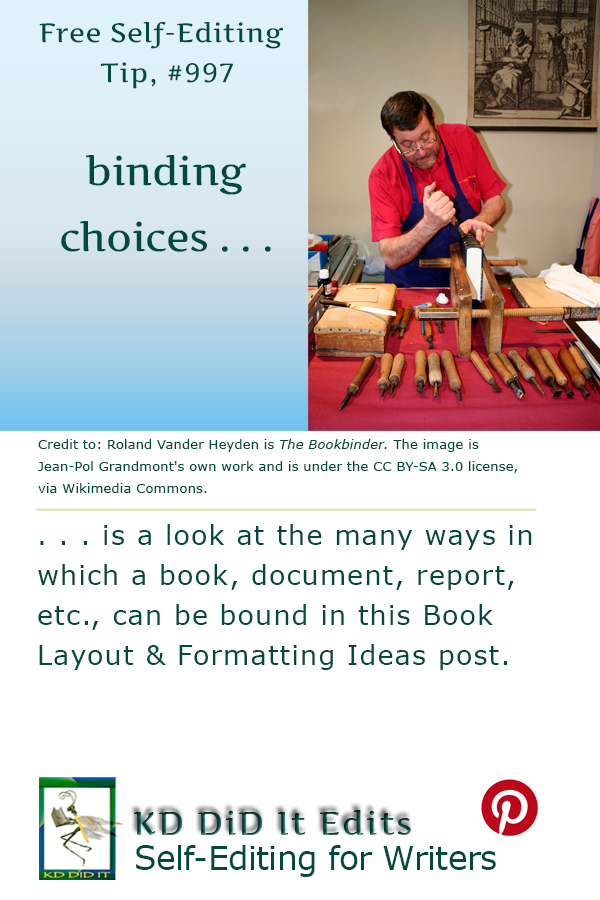Revised as of
15 May 2023
Bookbinding. I visualize leather and gilt edging, the smell of paper . . . bliss.
And, we have to get there, first by deciding what kind of binding will suit your manuscript, fit it within its genre and its target audience, and provide your reader with a good experience.
For most writers who want to publish, your primary choices in print (hardcopy) are hardcover or paperback (mass market or trade).
The Purpose and Process of Binding
The purpose of binding is to hold the pages together, using a cover to protect them from people handling them as well as from the environment. The cover also identifies the author, provides the title, and gives you the opportunity to use it for promotions and attracting attention.
The process of binding itself refers to physically putting the pages together and then covering it with some sort of material. The difference comes in how the pages are printed, how the pages are assembled, and then the type of cover used to enclose and protect the whole.
In truth, binding is a bit of a mess and may refer to the entire process or simply to the type of cover being used.
The Types of Bindings
The basic categories of binding include modern commercial, which includes hardcover, thermally activated, punch and bind, stitched, and letterpress binding.
I know: Why don’t paperbacks have their own category? Why does hardcover get its own?
Hardcover, in this case, is a general term that includes library binding, case binding (edition binding is another term for case binding, although it had a different meaning back in the day), oversewn binding, Smyth binding, double-fan adhesive binding, and board book for thick, hardcover books for children.
While paperbacks aren’t a general category term, they are created using thermally activated bindings, which include perfect binding, PUR perfect binding, and tape binding.
The punch and bind category is mostly aimed at office and home with double wire binding, cased-in wiro binding, comb binding, spiral binding, screw-and-post binding, and Velobind.
Stapled, stitched, or sewn binding is an eclectic category that includes books with less than 68 pages, creative styles, and historical bindings. Saddle-stitched binding is a misnomer, as it’s stapled. Pamphlet binding is very similar to saddle-stitched, except that it’s sewn down the center. The more creative bindings include Coptic binding, Japanese binding, which includes stab bindings and Japanese ribbon binding.
Letterpress binding is mostly custom binding with fine binding and calf binding.
Choosing the Best Binding For You
You can imagine the ideal binding, and then you will have to start paring down your ideas as you learn the cost of producing that perfect book.
Costs
Figure out how much you can charge for your book, and then work backward from there to ensure at least some net income. Start by doing some research as to who your target audience is. Explore your local bookstore or Amazon to discover the prices being charged for eBooks, paperbacks (trade and mass market), and hardcovers. Consider how old your target audience is and what they can likely afford.
Durability
How durable does your book need to be? How serious is your genre? Does your target audience expect the quality of a mass market paperback or does it need to be more durable?
How Many Pages in Your Book?
A book that is 8 to 68 pages long is likely to use saddle-stitch or pamphlet. A book that’s around 300 pages is more likely to use perfect binding for a paperback and case binding for a hardcover.
How Does Your Book Open?
A standard book opens and requires you to hold it or support it in some way.
A cookbook or manual is easiest to use if it opens flat or can be folded back on itself.
Book Layout & Formatting Ideas, a.k.a. . . .
. . . typesetting, is all about the how the inside of your fiction or non-fiction book — whether print or eBook — looks and the experience it provides your reader. Explore which pages are required or optional, the order the pages should follow, whether the page should be verso or recto, the definitions of technical terms, each page’s content, and in-depth formatting that includes text alignment, margins, bleeds, the choice of font and sizes, linespacing, how and where to place graphics of all sorts, how to style chapter headings, the need for a table of contents, the inclusion of epigraphs, running heads and feet, and so much more. Yes, book cover design will also be covered. Do check with the style guide for your publisher or in your field for how your layout may differ in page order and requirements, whether it’s page order or formatting. Make a checklist.
At the very least, knowing more about book layout design will help you understand a book layout designer you may hire.
My research has evolved into a sharing of information with y’all. I’m hoping you’ll share with us any questions you’ve had on this subject that have been a bête noire for you from either end. If you found this post on “Binding Choices (for Print)” interesting, consider subscribing to KD Did It, if you’d like to track this post for future updates.
NOTE: Example pages provide a sample of what should be found on that page and/or an explanation of the text you’ll need to write for that page. It will be noted when the layout differs between a print and an eBook.
| Bookbinding | |||
| Book Layout and Design | |||
| Definition: The art or trade of binding books.
|
|||
| Modern Commercial Bindings | |||
| Case Binding | Definition: The inside pages are sewn together in sections/signatures, then glued together into a textblock.
The signatures are then glued to the end-papers which are finally glued to the cover’s spine. The cover or “case” is made of cardboard covered with paper, cloth, vinyl, or leather. The overall term for hardcover books, and the most common type of hardcover binding for books. A.k.a. cloth binding, edition binding, hardcover binding, publisher’s binding |
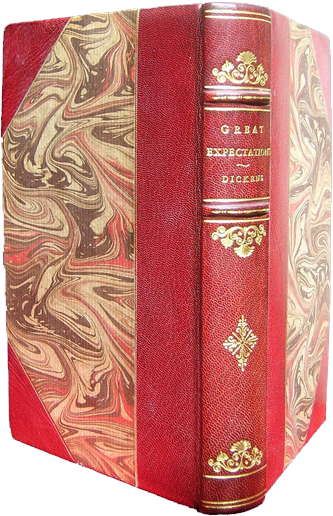
Fig. 1. Dickens’ Great Expectations in Half Leather Binding is Jameslwoodward‘s own work and under the CC BY 3.0 license, via Wikimedia Commons. |
|
|
Return to top or post contents |
Used for: Most common type for hardcover books, including reference books, yearbooks, children’s books, novels, vanity books, coffee table books, art books, law books, medical books, and most custom books. Pros: Cons: |
||
| Hardcover | Definition: Uses a rigid cardboard cover and its signatures are stitched in the spine. | ||
|
Return to top or post contents |
Unusually large and heavy books are sometimes bound with wire.
A number of binding types fit in the hardcover category, including: A.k.a. hardbound Credit to: Reimherr |
||
| Library Binding | Definition: A hard cover for books which keeps the book safe for a long time and is intended for library and school use. | 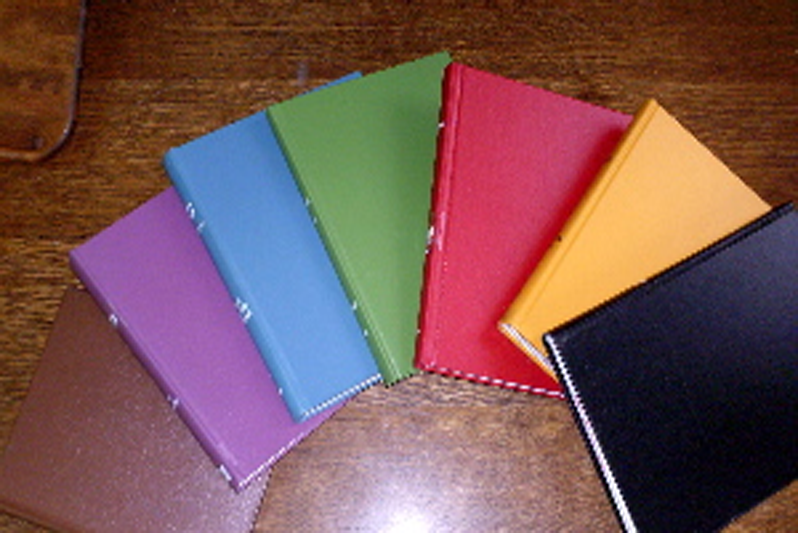
Fig. 2. Library Bound Books is Lauren’s own work and is in the public domain, via Wikimedia. |
|
|
Return to top or post contents |
Used for: The goal is long-term preservation for books and periodicals that are used in libraries, schools, and other venues where the books will be read frequently. Pros: Cons: |
||
| Edition Binding | Definition: Cloth to which a sizing agent was applied, that would both render the cloth impervious to adhesive and allow it to take dye evenly.
Recognized for its cloth-covered, gilt-blocked casing, which is applied to a whole or part of an issue bound for a publisher to sell. |
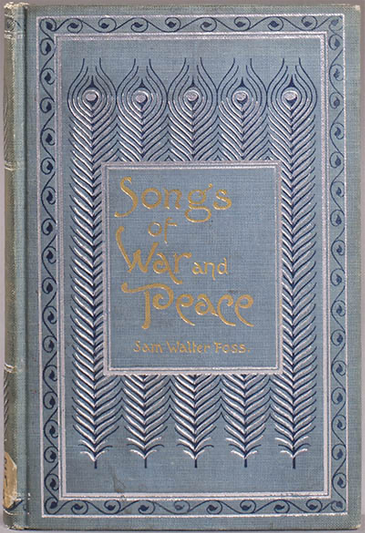
Fig. 3. Songs of War and Peace by Sam Walter Foss. |
|
|
Return to top or post contents |
Used for: Edition binding first came into use by publishers who were selling a series or as part of an issue. Today, it’s part of the case binding. For Pros and Cons, see Case binding. |
||
| Oversewing | Definition: A very strong method of binding and can be done on books up to five inches thick.
However, the margins of oversewn books are reduced, and the pages will not lie flat when opened. The signatures of the book start off as loose pages which are then clamped together. Small vertical holes are punched through the far left-hand edge of each signature, and then the signatures are sewn together with lock-stitches to form the text block. A.k.a. over sewn, oversewn |

Fig. 4. An example of oversewing. |
|
|
Return to top or post contents |
Used for: Frequently used by institutional and civic libraries, particularly to bind books with frequent circulation. Especially for Print-on-Demand hardcover books. Pros: Cons:
|
||
| Smyth Sewn | Definition: The “gold standard” for binding, signatures of the book are folded and stitched through punched holes or sawed notches along the fold.
The stitched together textblock is often glued on the spine to keep the thread in place and sometimes further reinforced by gluing a piece of fabric over the thread on the spine. Head bands and foot bands made of decorative ribbon are sometimes glued to the top and bottom of the pages to further beautify the binding and hide stitching and glue. A.k.a. section-sewn binding, sewing through the fold, Smyth sewing |
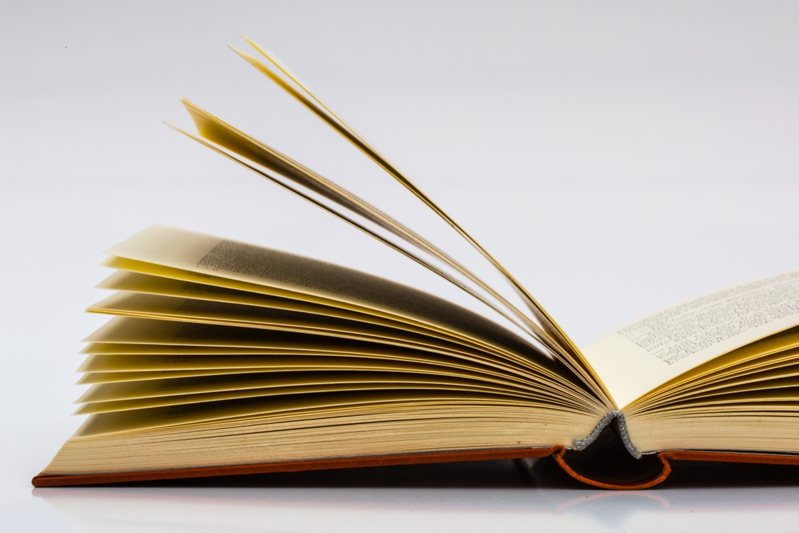
Fig. 5. In the public domain, via PxHere. |
|
|
Return to top or post contents |
Used for: Hardcovers, Paperblank journals, hymn books, coffee table books, and text books. Pros: Pages cannot fall out unless they are ripped. Many varieties of sewing stitches exist, from basic links to the often used Kettle Stitch. Cons: |
||
| Double-fan Adhesive Binding | Definition: Starts with two signatures of loose pages, which are run over a roller — “fanning” the pages — to apply a thin layer of glue to each page edge.
The two signatures are perfectly aligned to form a text block. The textblock is glued together and then attached to a piece of cloth lining to form the spine. A.k.a. millennial binding |

Fig. 6. Demonstrates how the pages are attached to the binding. |
|
|
Return to top or post contents |
Used for: Items with a good gutter margin such as theses or to repair worn out adhesive-bound books. Pros: Cons: |
||
| Board Book | Definition: The book block (pages) and binding (typically two pieces of paperboard glued together) are made from the same heavy duty paperboard and designed to be very durable.
The pages/cover can be cut to a shape, usually one with rounded corners for safety. |

Fig. 7. Board Book is Ubcule‘s own work under the CC BY-SA 4.0 license, via Wikimedia Commons. |
|
|
Return to top or post contents |
Used for: Used almost exclusively in children’s books. Pros: Safely allows babies to explore the text and pictures. Cons: Don’t place text, images, or the ISBN barcode on or too close to the hinge. |
||
| Yapp Style Binding | Definition: Customarily uses leather for the cover but overlaps the top, bottom, and front continuously with the yapped edges meeting, almost doing so, or possibly overlapping each other, hence limp binding, intending to protect the pages of the textblock.
Such bindings are sometimes fitted with a zipper. They always have round corners. Variations include the semi-yapp, a.k.a. partial yapp, which extends a short way over the pages; standard yapp extends just beyond the edge of the text block; and, the circuit edge, a.k.a. divinity circuit or divinity edges, does not provide a continuous overlap of the cover. I suppose you could consider the yapp style a soft binding instead of a hard. A.k.a. limp binding, yapp edging |
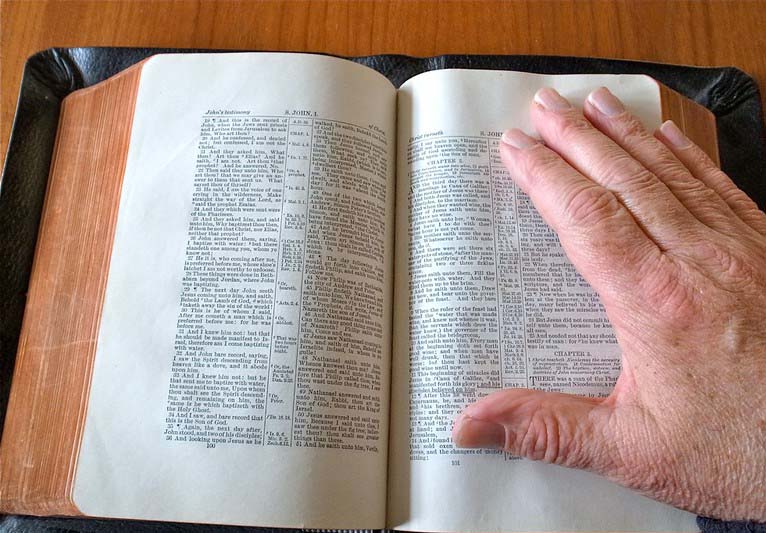
Fig. 8. My First Bible by George Redgrave is under the CC BY-ND 2.0 license, via Flickr. — An open bible around which the limp edges of the binding are seen around the edges. |
|
|
Return to top or post contents |
Used for: In the past, books of verse and books of devotion were bound this way, although today it’s almost exclusively religious books, e.g., the bible. Pros: Cons: |
||
| Softbound | |||
| The overall term for all books that are paper-bound. | |||
| Thermally Activated Binding | |||
| Thermal binding is a bit different: The pages of the book are glued to the spine by heating the cover’s spine. | |||
| Paperback | Definition: A type of book characterized by a thick paper or paperboard cover, and often held together with glue rather than stitches or staples.
Be aware some hardcover books are sometimes perfect bound. |
||
|
Return to top or post contents |
In contrast, hardcover or hardback books are bound with cardboard covered with cloth, plastic, or leather.
A number of binding types fit in the hardcover category, including: A.k.a. softback, softcover |
||
| Perfect Binding | Definition: Typical paperback binding with pages glued to the spine.
Uses a one piece lower-quality cover of heavyweight cardstock paper that is often coated or laminated. EVA glue is used to glue together the cover and pages. A.k.a. adhesive binding, perfect bound, soft cover binding, unsewn binding |

Fig. 8. On the left, it shows a top view of how the pages appear when bound to the spine. On the right it shows how the book fans open. |
|
|
Return to top or post contents |
Used for: Best for publications with 68 pages or more. Paperback, magazines, children’s books, soft or hardcover books, manuals, catalogues, annuals. Print-on-Demand hardcover books are printed this way. Pros: Can print on the spine. Cons: Has a flimsy, bendable cover. |
||
| PUR Perfect Bound | Definition: PUR, a very durable binding adhesive, uses a molecular bond to secure the cover and pages, which results in a stronger and more flexible spine.
A.k.a. more secure perfect binding |
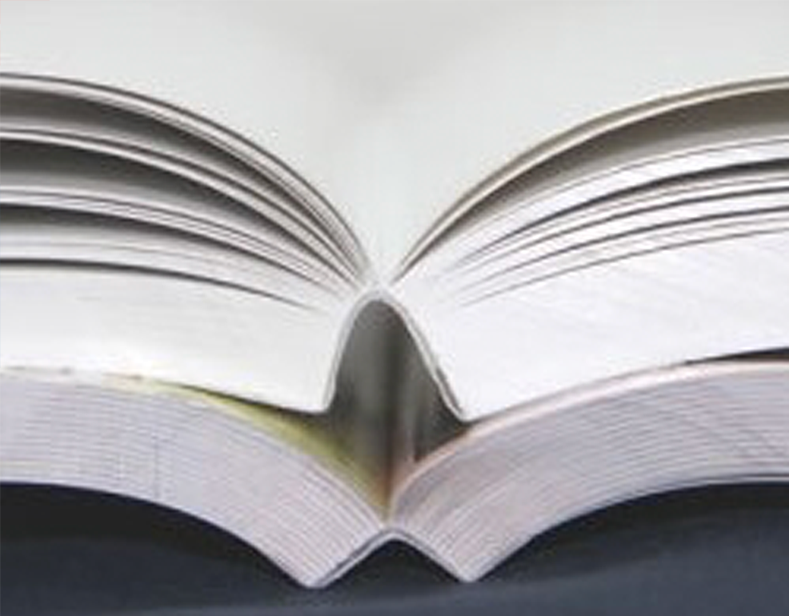
Fig. 9. Shows two books open, one atop the other. |
|
|
Return to top or post contents |
Used for: Excellent for pages with a smooth, glossy finish, such as mylar, laminate, or any gloss coating. Pros: Cons: |
||
| Burst Binding | Definition: A variation of perfect binding that uses extra slits/holes along the spine of the book to allow the glue to seep deeper into the spine of the book. A.k.a. burst bound binding |
||
|
Return to top or post contents |
Used for: Books with page counts of 64 pages or more. Quality periodicals, school yearbooks, light use catalogues, and other types of general usage publications. Pros: Cons: Not suitable for heavy wear usages |
||
| Notch Binding | Definition: A variation of perfect binding that creates notches along the spine for an increased surface area to hold the glue. | ||
|
Return to top or post contents |
Used for: A preferred choice of printers for coated stocks, cross grain stocks, and multiple paper types within a book. Pros: Saves on paper, since a spine grind margin is not required. Cons: Folding accuracy is crucial, as it can affect the notch channel in the folded signature. |
||
| Tape Binding | Definition: Uses strips coated in thermoplastic glue that, when melted or pressed to the spine and covers of a book, creates a strong and lasting bind.
Typically uses a clear, frosted, or report front cover and a report back cover. A.k.a. tape bound |
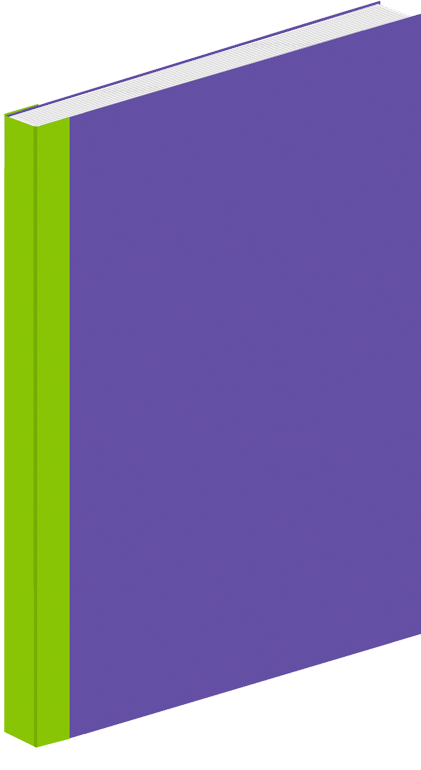
Fig. 10. A visual display of tape on the spine. |
|
|
Return to top or post contents |
Used for: Paperbacks and soft cover books. Pros: Bonds well with most types and weights of paper. Book size can be up to 1.5” in width and a maximum 14” in length. Cons: Book can’t lie flat. |
||
| Perfopunch Binding | Definition: A type of adhesive binding in which adhesive penetrates into perforated folds to hold the signatures together.
See also double fan adhesive binding. A.k.a. burst, perfo- |
||
| Punch and Bind | |||
| Punch and bind binding is usually used in the business or home environment.
Wire bound books are made of individual sheets, each punched with a line of round or square holes on the binding edge. |
|||
| Double Wire | Definition: Uses a C-shaped wire spine that is squeezed into a round shape using a wire-closing device.
Smaller books up to 9/16″ in diameter uses a 3:1 pitch hole pattern (three holes per inch). Thicker books use a 2:1 pitch hole pattern with two holes per inch, as the holes are slightly bigger to accommodate slightly thicker, stronger wire. A.k.a. double loop, twin loop, wire-O binding |
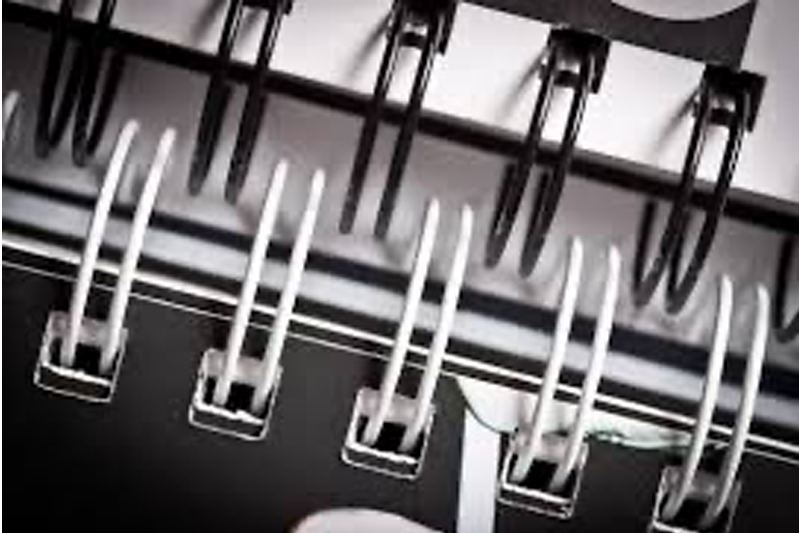
Fig. 11. A close-up of a black and a white double coil binding. |
|
|
Return to top or post contents |
Used for: Used for books that will be viewed or read in an office or home type environment. Great for annual reports, owner’s manuals, and software manuals. Pros: Allows books to have smooth crossover, turn easily. Affordable in many colors. Easy to tear out pages. Can be turned back on itself. Cons: Spine can be crushed. |
||
| Cased-in Wiro Binding | Definition: Same as the Double Wire, BUT the coil is hidden.
A.k.a. concealed wire 0 binding, curly binding, double ring, Wire-O |

Fig. 12. A close-up from the bottom of the hidden coil binding. |
|
|
Return to top or post contents |
Used for: Used for books that will be viewed or read in an office or home type environment. Great for annual reports, owner’s manuals, and software manuals. Pros: Allows for large numbers of papers. Can easily change out pages. Cons: Images that join at the center are displaced. Spine can be crushed. |
||
| Comb Binding | Definition: Comb binds actually look like a comb threading into a series of holes punched into the edge of the book.
Uses a 9/16″ pitch rectangular hole pattern punched near the bound edge. A.k.a. 19-ring binding, comb bind |
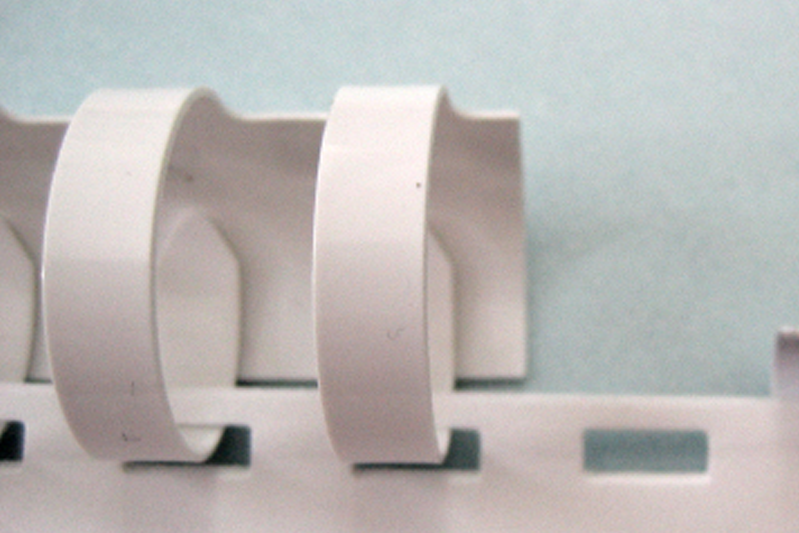
Fig. 13. Comb Bind Examples by Digitalgadget is in the public domain, via Wikimedia Commons. |
|
|
Return to top or post contents |
Used for: Ideal for reports, presentations, cookbooks, albums, scrapbooks, manuals, inventory records, sales sheets — any book you want to be opened to lay flat. Pros: Combs available in a wide range of colors and diameters, which can be re-used or recycled. Can print on the spine. Cons: Comb bindings are not as durable, can be crushed, and can open up. |
||
| Spiral Binding | Definition: Involves punching of similar holes but instead of the comb, a metal/plastic coil is threaded through the holes.
Uses a number of different hole patterns for binding documents. The most common hole pattern used is 4:1 pitch (4 holes per inch). However, spiral coil spines are also available for use with 3:1 pitch, 5:1 pitch and 0.400-hole patterns. A.k.a. coil, spiral bound |
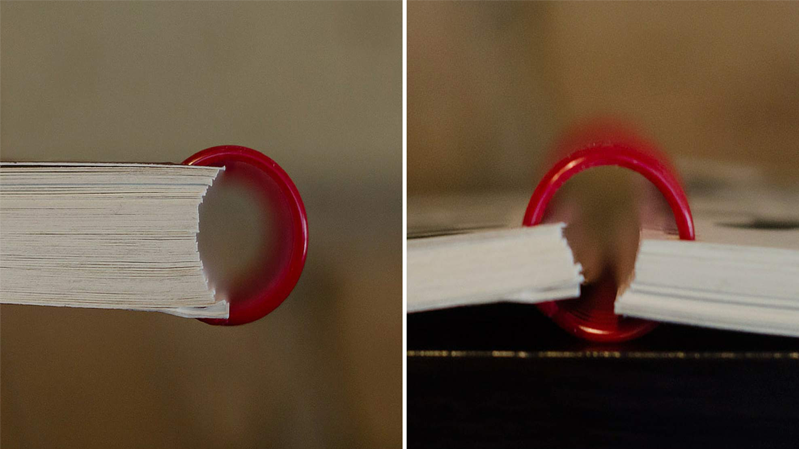
Fig. 14. Two close-ups. The one on the left shows the spiral-bound book closed; the one on the right is open. |
|
|
Return to top or post contents |
Used for: Commonly used for atlases and other publications where it is necessary or desirable to be able to open the publication back on itself without breaking the spine. Pros: Provides a hinge with a greater degree of flexibility. Cons: Coils can be crushed. |
||
| Screw-post Binding | Definition: They’re bolts really, known as Chicago screws. Think of them as metal rods that can be threaded through your documents to produce great-looking books.
They come in aluminum, brass, and plastic and in a wide variety of lengths from 1/8″ to 5″. |
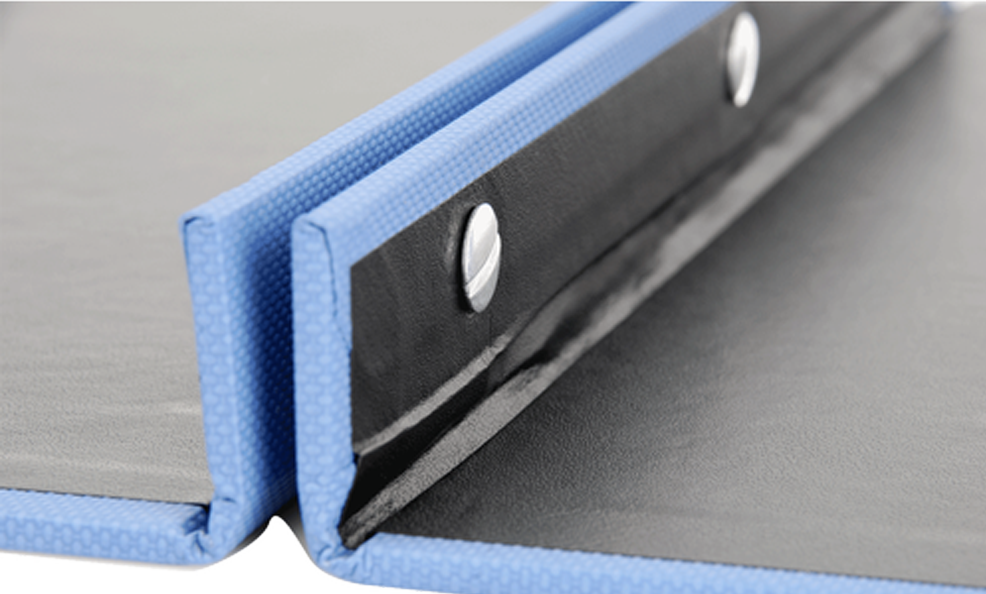
Fig. 15. Screw Post Binder is courtesy of 11×17 Office Solutions. |
|
|
Return to top or post contents |
Used for: Ideal for binding together portfolios, sample books, architectural and engineering drawings, menus, photo albums, legal pleadings, swatch books, leather goods, anything leather-bound, especially if you want to be able to remove or insert pages. Pros: Easy to use, affordable, and no special equipment needed to use them. Cons: |
||
| Velobind | Definition: Permanently rivets pages together using a plastic strip on the front and back of the document. | 
Fig. 16. Shows the black strip over the rivets. |
|
|
Return to top or post contents |
Used for: Primarily used for business and legal presentations and small publications. Pros: Gives a professional look. Binding spines cannot be deformed. Cons: Will not open flat. |
||
| Stapled, Stitched, or Sewn Binding | |||
| Constructed in the same way as a hardbound book, except it lacks the hard cover.
This type of binding is mostly used for less than 68 pages and/or for creative styles. It also includes historical bindings. |
|||
| Saddle-stitching | Definition: Stapled in the spine.
A.k.a. stapling, stapling through the centerfold |
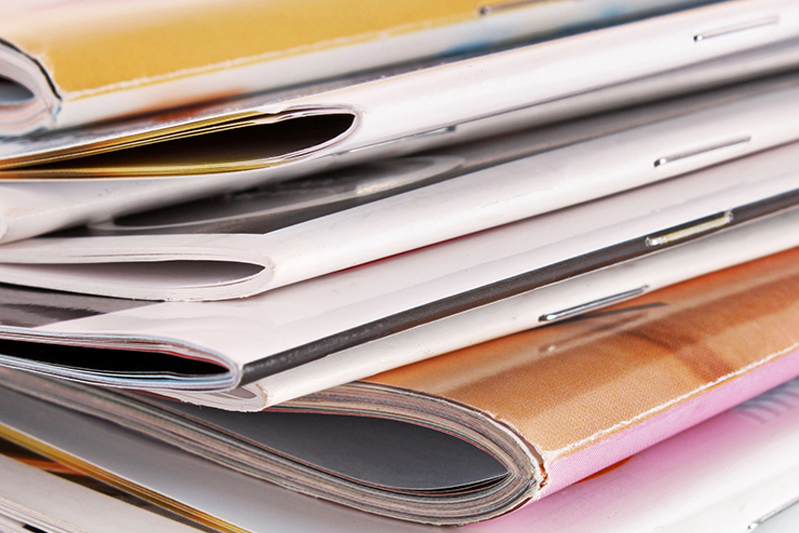
Fig. 17. A small stack of folded pamphlets with the staples showing. |
|
|
Return to top or post contents |
Used for: Magazines, comic books, lookbooks, booklets, catalogs. Pros: Lays flat for the most part. Cons: Looks lower quality. |
||
| Pamphlet Binding | Definition: Sewn with a running stitch down the spine, which creates a more elegant finish.
It’s an alternative to saddle-stitching. A.k.a. sewing through the centerfold |
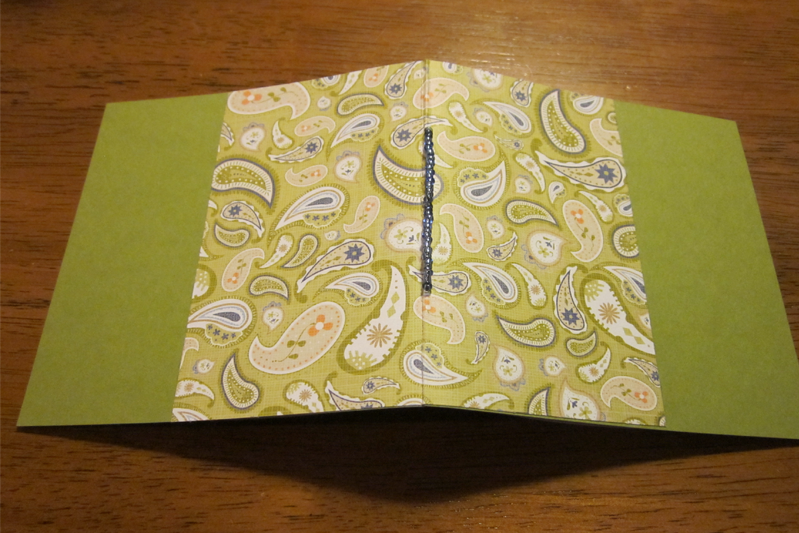
Fig. 18. Pamphlet Stitch Binding by cpclbookgirl, via History of the Book. |
|
|
Return to top or post contents |
Used for: Magazines, brochures, music, and other ephemera — colonial America’s first social media! Pros: Has a more elegant finish and appearance for thin books or booklets than saddle-stitch. Cons: Limited number of pages possible. |
||
| Coptic Binding | Definition: Non-adhesive binding has signatures sewn through the folds and then sewn through two loose, covered boards with a chain-like stitch across the spine.
A.k.a. Coptic sewing, exposed spine binding |
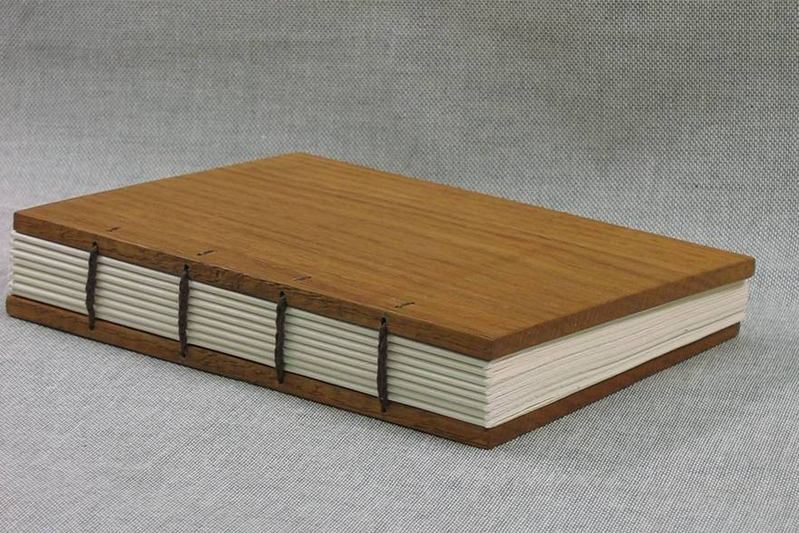
Fig. 19. Coptic Flat by Ratbasket at English Wikipedia and is under the CC BY-SA 3.0 license, via Wikimedia Commons. |
|
|
Return to top or post contents |
Used for: Handmade art journals or other books. Pros: It also showcases a clear view of the spine and the colorful threads holding the signatures (page groupings) together. Cons: |
||
| Japanese Binding | Definition: Cover and sheets are sewn together with decorative stitches. | 
Fig. 20. Japanese Stab Bindings. |
|
|
Return to top or post contents |
Used for: An artistic binding that is ideal for creative projects. Pros: Cover can be hard or soft. Versatile pages allowed. Perfect for aesthetic decorations. Easy to repair. Cons: |
||
| Stab binding | Definition: Stabs holes along the left edge of a book in a straight line or more complex pattern and then sews thread through the holes to both bind and decorate the book.
There is a wide variety of stab bindings depending on how many holes there are and the patterns formed. There are four basic variations:
A.k.a. Japanese Side Stitch Credit to: Stab |
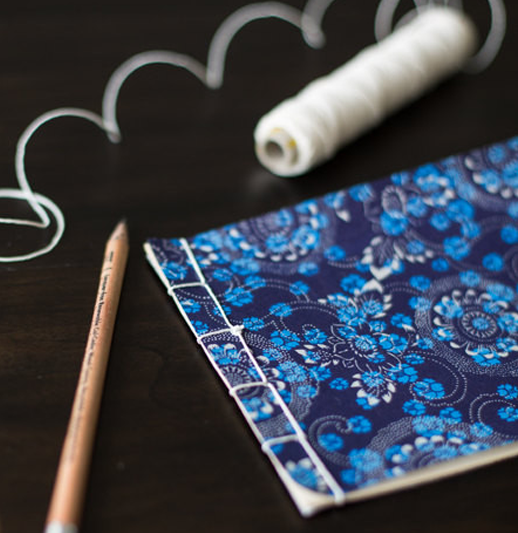
Fig. 21. Japanese Four-hole Binding by Grace Bonney courtesy of Bookbinding 101. |
|
|
Return to top or post contents |
Used for: Scrapbook, family memento book, and more. Whenever you want to get creative. Pros: Cons: |
||
| Japanese Ribbon Binding | Definition: In place of adhesive, a strong yet decorative ribbon binds the loose leafs together with a cover.
Uses an intricately laced ribbon to bind loose leafs together. Twine is also sometimes used in place of ribbon. A.k.a. Japanese binding |
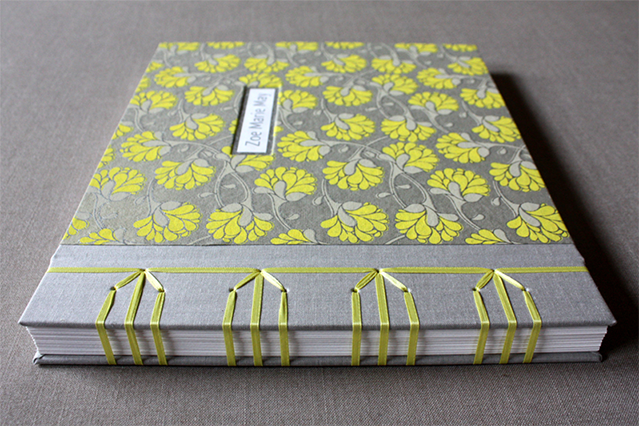
Fig. 22. A visual of a decorative stab stitch in yellow-green. |
|
|
Return to top or post contents |
Used for: An artistic binding that is ideal for creative projects. Pros: Cover can be hard or soft. Versatile pages allowed. Perfect for aesthetic decorations. Easy to repair. Cons: |
||
| Letterpress Binding | |||
| Letterpress binding can include case binding and also custom bindings in many different materials for specific books or collections.
Some of the more common materials for covers are leather, decorative paper, buckram, and cloth. |
|||
| Fine Binding | Definition: Custom work creating an elaborate and decorative binding with exceptionally high craftsmanship, which can include elaborate leatherwork, jewels, beads, etc., using particularly high-quality materials, especially full leather bindings.
A.k.a. extra binding |
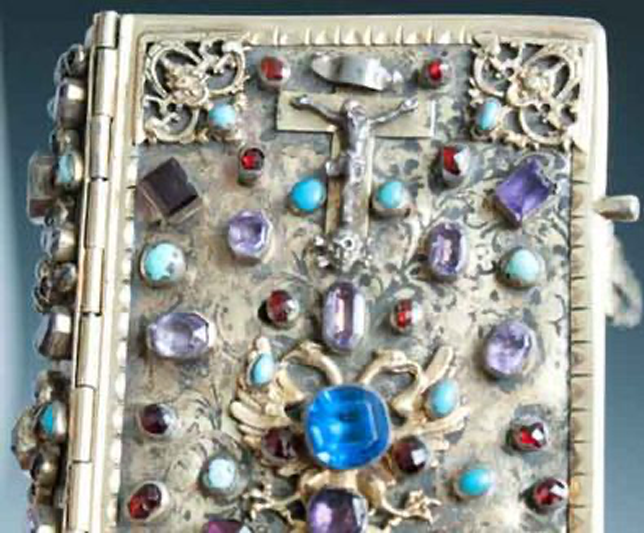
Fig. 23. A cover heavily encrusted with jewels and embroidery. |
|
|
Return to top or post contents |
Used for: Journals, notebooks, classic works, multi-volume sets, preserving treasures, and making new treasures. Pros: Cons: |
||
| Calf-binding | Definition: Calf or calf hide, with their smooth surface and no identifiable grain, is the most common form of leather binding.
In early book publishing days it was a convenient material to hand and easily decorated. A.k.a. full-bound, leather bound |
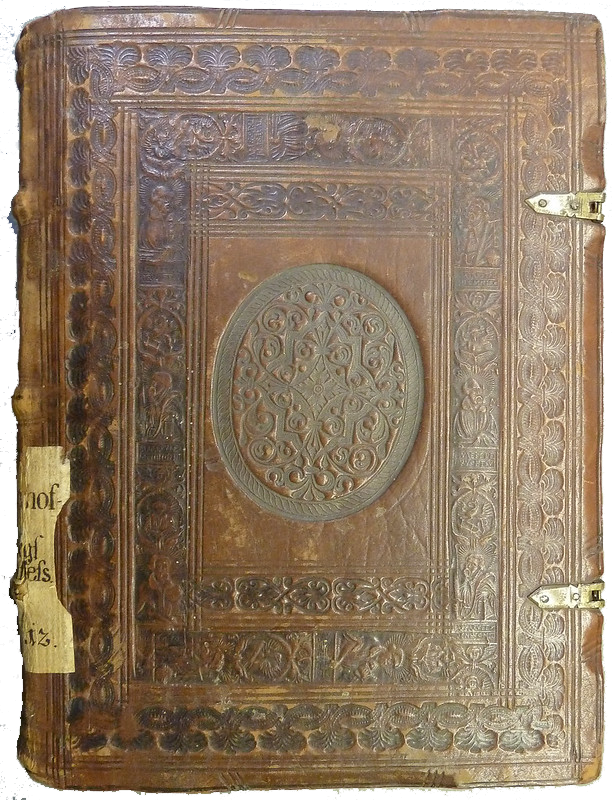
Fig. 24. Early Binding by POP is under the CC BY 2.0 license, via Flickr. |
|
|
Return to top or post contents |
Used for: Hardcover books. Pros: Cons: |
||
| Morocco binding | Definition: Uses goatskin dyed in strong colors. |

Fig. 25. Upper Cover of a Folder for Letters or Documents was uploaded by DimitraCharalampidou and is under the CC0 1.0 license, via Wikimedia Commons. |
|
|
Return to top or post contents |
Used for: Hardcover books. Pros: Cons: Skins are small. |
||
C’mon, get it out of your system, bitch, whine, moan . . . which words are your pet peeves? Also, please note that I try to be as accurate as I can, but mistakes happen or I miss something. Email me if you find errors, so I can fix them . . . and we’ll all benefit!
Satisfy your curiosity about other Book Layout & Formatting Ideas by exploring its homepage or more generally explore the index of self-editing posts. You may also want to explore Formatting Tips, Grammar Explanations, Linguistics, Publishing Tips, the Properly Punctuated, Word Confusions, Writing Ideas and Resources, and Working Your Website.
Resources for Binding Choices (for Print)
Angebranndt, Susan. “Double Wire Binding.” Delran. n.d. Web. 28 July 2021. <https://www.delran.com/what-is-double-wire-binding/>.
“Beauty for Commerce: Publisher’s Bindings, 1830–1910.” Rare Books and Special Collections. University of Rochester. n.d. Web. 28 July 2021. <https://rbscp.lib.rochester.edu/beauty-for-commerce>.
“Bindings.” Book Printing.com. n.d. Web. 28 July 2021. <https://bookprinting.com/printing-options/bindings>.
BoekBindBoetiek. “A Reference Guide on Bookbinding Types.” 24 May 2014. Web. 28 July 2021. <http://marenne.deviantart.com/journal/A-reference-guide-on-bookbinding-types-454645325>.
“Bookbinding.” Wikipedia. 30 July 2021. Web. 30 July 2021. <https://en.wikipedia.org/wiki/Bookbinding#Paperback_binding>.
“Bookbinding: Modern Commercial Bookbinding.” Wikipedia. 19 July 2021. Web. 28 July 2021. <https://en.wikipedia.org/wiki/Bookbinding#Modern_commercial_binding>.
Campbell, Gregor R. “From a Binder’s Point of View: Some Advice for Independent Desktop Publishers. n.d. Web. 30 July 2021. <http://www.campbell-logan.com/img/pdfs/Binder%27s_PoV.pdf>.
“Circuit Edges.” A Dictionary of Descriptive Terminology. Bookbinding and the Conservation of Books. Conservation Online. n.d. Web. 26 Apr 2023. <https://cool.culturalheritage.org/don/dt/dt0703.html>.
“Comb Binding: 19 ring Plastic.” Popp Binding and Laminating. n.d. Web. 28 July 2021. <https://poppbinding.com/product/clearance-comb-binding-19-ring-plastic-100-count/>.
“Concealed Wire O Binding — Soft Cover or Hardcover.” Star Print Brokers. 20 Feb 2020. Web. 28 July 2021. <https://www.starprintbrokers.com/portfolio/concealed-wire-o-binding/>.
“Double Fan Adhesive Binding.” Green Chair Press. n.d. Web. 28 July 2021. <https://www.greenchairpress.com/blog/?page_id=613>.
Gimer, Tom. “Differences Between Coil and Comb Binding.” 12 Feb 2013. Web. 28 July 2021. <https://kkpdc.com/2013/02/differences-between-coil-and-comb-binding/>.
Glossary A-G. Publishers Bindings Online.The University of Alabama. n.d. Web. 30 July 2021. <http://bindings.lib.ua.edu/glossary1.html>.
“Japanese Ribbon Binding.” Advantage Book Binding & Post Press Services. n.d. Web. 28 July 2021. <https://www.advantagebookbinding.com/additional-services/japanese-ribbon-binding/>.
“Leather Binding: Terminology and Techniques.” Book Collecting Guide. Biblio.com. n.d. Web. 28 July 2021. <https://www.biblio.com/book-collecting/care-preservation/leather-binding-terminology-and-techniques/>.
Maren. “Which Binding to Choose for Which Product? A Comparison of Binding Types.” Online Printers Magazine. n.d. Web. 28 July 2021. <https://www.onlineprinters.co.uk/magazine/comparison-binding-types/>.
“The Origin of the Publisher’s Cloth Binding.” Rare Books and Manuscripts. The University of Adelaide. <https://www.adelaide.edu.au/library/special/exhibitions/victorian-bindings/cabinet2/>.
“Over Sewn Binding.” Carbon 8. n.d. Web. 28 July 2021. <https://www.carbon8.com.au/oversewn-singer-binding>.
“Publishers Bindings.” Digital Collections. Boston Athenæum. n.d. Web. 28 July 2021. <https://cdm.bostonathenaeum.org/digital/collection/p16057coll49>.
Reidhead, Joe. “The Basics of Bookbinding Types.” Reidhead & Company. 9 Oct 2019. Web. 28 July 2021. <https://reidheadpublishers.com/2019/10/09/the-basics-of-book-binding-types/>.
Reimherr, David. “Is Perfect Binding or Saddle Stitch Better for Your Publication? (+ FREE Perfect Bound Spine Width Calculator).” Shweiki Media. 12 Dec 2014. Web. 30 July 2021. <https://www.shweiki.com/2014/12/binding-choosing-perfect-binding-saddle-stitch-publication/>.
“Selecting The Proper Bind: An Introduction To DIY Document Binding.” Saddle Point Systems. n.d. Web. 28 July 2021. <https://www.saddlepointsystems.com/in-depth-articles/selecting-the-proper-bind/>.
“Stab Binding: 5 Things to Know About This Classic Bookbinding Technique.” End Paper: The Paperblanks Blog. 18 Feb 2016. Web. 30 July 2021. <http://blog.paperblanks.com/2016/02/stab-binding-5-things-to-know-about-this-classic-bookbinding-technique/>.
“Yapp style ( Yapp edges ).” A Dictionary of Descriptive Terminology. Bookbinding and the Conservation of Books. Conservation Online. n.d. Web. 26 Apr 2023. <https://cool.culturalheritage.org/don/dt/dt0703.html>.
Pinterest Photo Credits:
The Bookbinder is Jean-Pol Grandmont‘s own work and is under the CC BY-SA 3.0 license, via Wikimedia Commons. This image was published with the agreement of the photographed person, Roland Vander Heyden.


